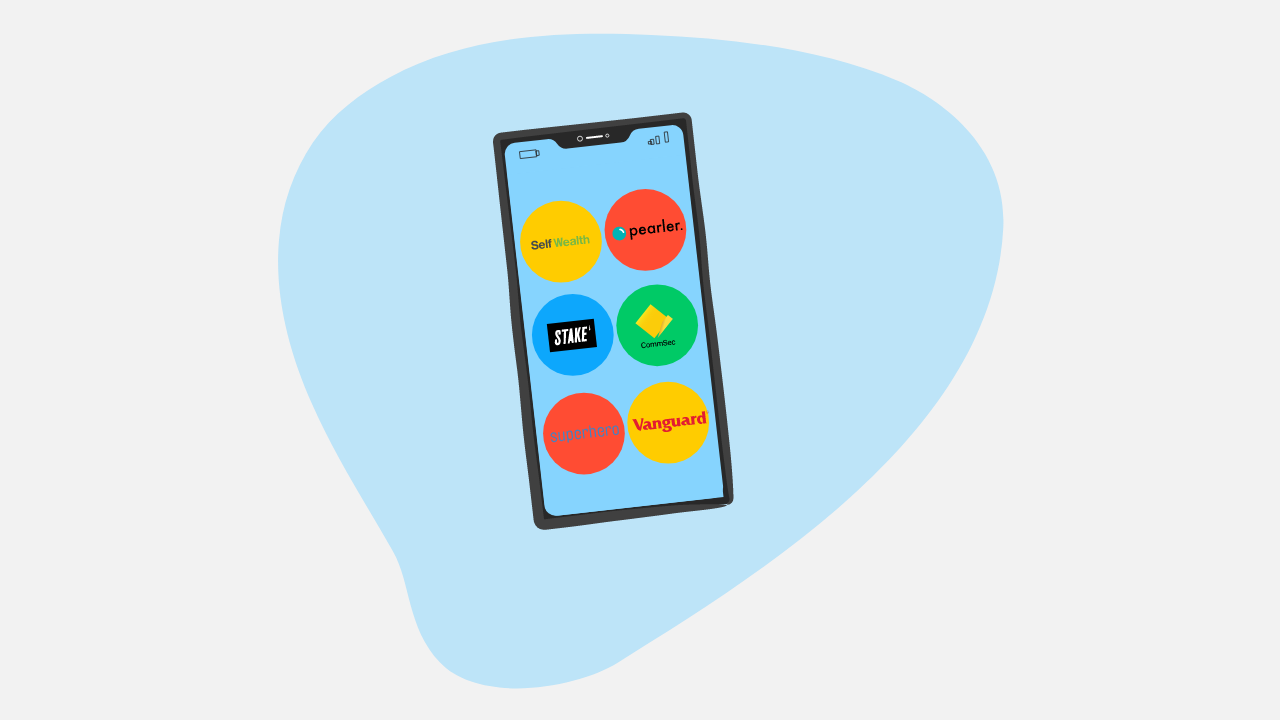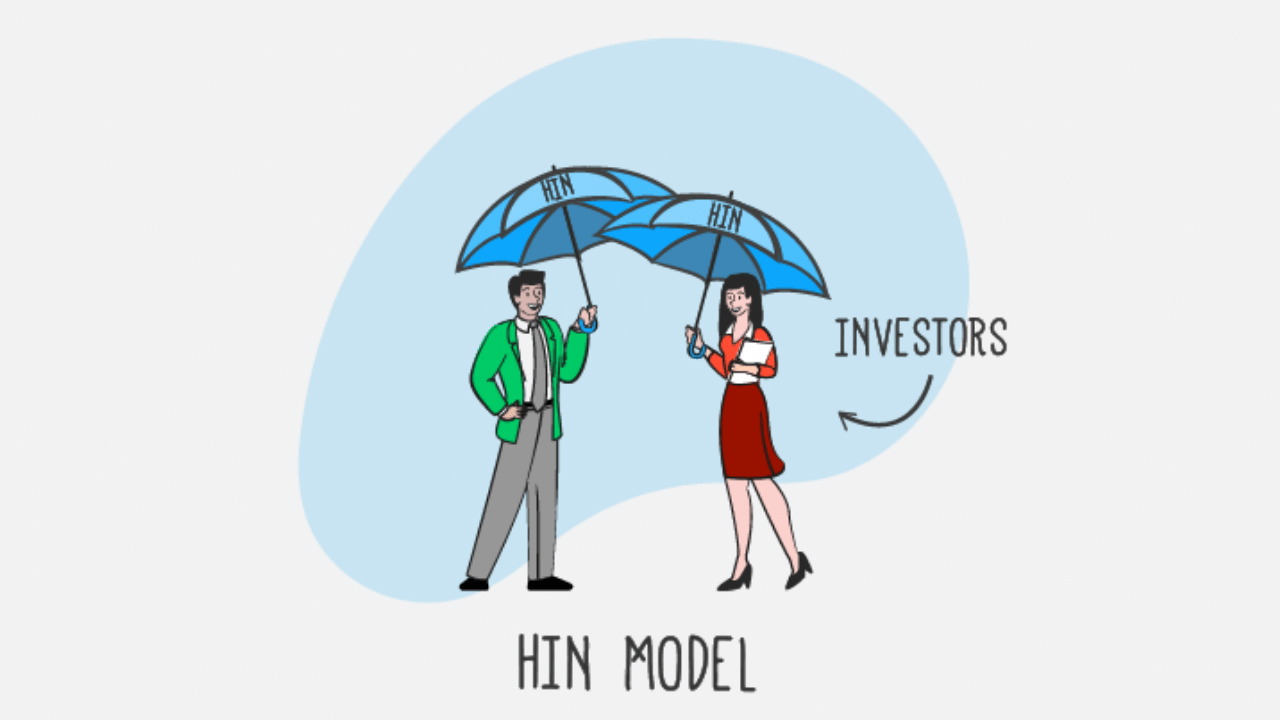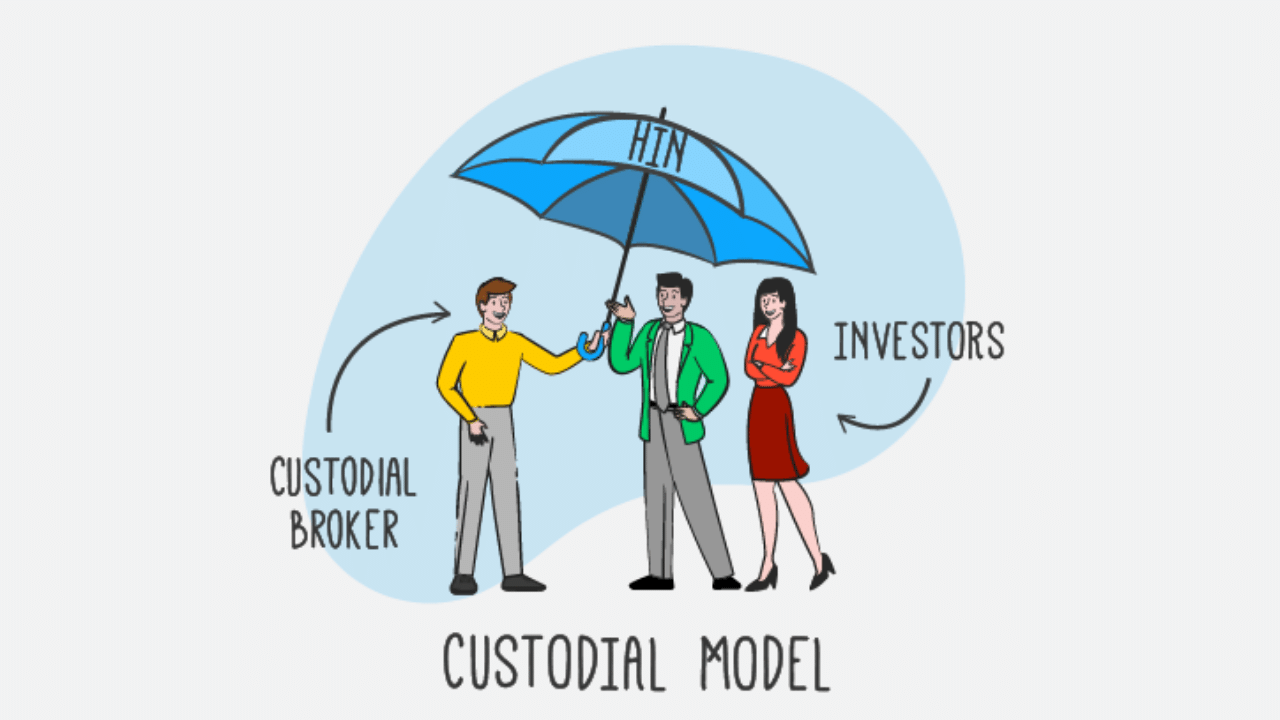Site menu
Site menu
✅ You’re reading a free investor guide from Rask. To view more guides, click here.
Finding the best online trading account to buy or sell shares in Australia can be scary. Believe me, we know that buying shares in Australia for the first time is a daunting task. Commsec, Pearler, Selfwealth, Stake, Vanguard Personal Investor, Superhero… where do I even start!
Please note: the brokerage prices, costs and information we’ve included here is a guide only. And the fees and charges change regularly. Refer to the broker’s website to read its fee schedule, product disclosure statement (PDS) and financial services guide (FSG).
In Australia, if you want to buy shares or ETFs you will generally need to use a broker to facilitate the transaction.
Our main market in Australia is called the Australian Securities Exchange (ASX). Think of it like a farmers market, with a variety of products for sale, and both shoppers and vendors roaming around. The main difference is that you can sell the apples you just purchased to other shoppers.
However, to buy anything from the market you need to use a broker. This ensures an orderly operation of the marketplace and greater transparency for all involved.
To place an order through a broker, you’ll need to create an account. However, because of the financial rules in Australia, you will need to provide more than just a secure password. The broker is also required to collect information like your address, DOB and identification documents.
A brokerage account allows you to place orders to buy and sell shares and ETFs and does all the work behind the scenes once you place an order. Instead of directly paying the seller for the shares you just bought, you provide your broker with your money and they’ll transfer the funds on your behalf.
Basically, an investor applies to an online stockbroking company to create an account, link a bank account to fund it, and presto – it’s time to buy and sell shares. It’s a tiny bit more complicated than that, but you get the idea.
Most of Australia’s major banks have a stockbroking arm that allows customers, and customers of other banks, to trade shares on the Australian Securities Exchange (ASX). Major brokerage platforms in Australia include names like CommSec, Nabtrade and SelfWealth. When the account is funded, an investor needs to find the share they are looking for and submit an order.
The broker sends that order to the market and, hopefully, the buy order is matched with a seller. You’ll get a trade confirmation almost straight away but the settlement of a trade can take a couple of days to be processed by the ASX.
Most brokerage accounts give you access to one exchange, like Australia’s ASX sharemarket.
However, some brokerage firms and accounts can give you access to more markets from one country. For example, some brokers allow you to log-in just once and trade stocks on both the Australian and US markets.
Generally, a robo-adviser (such as SixPark, InvestSmart or Stockspot) will provide you with an expertly run portfolio and make investment decisions and trades on your behalf. However, it is likely that they will set up a brokerage account in your name to make the trades, so make sure to ask!
A managed fund is generally an investment vehicle that invests your money into various asset classes, through a unit trust, at the fund manager’s discretion. In most cases, you don’t need a brokerage account to invest in a managed fund.
A brokerage account allows you to buy and sell investment options listed on the ASX including shares, ETFs, REITs, bonds, LICs and hybrids.
The challenge many investors have after opening a brokerage account is deciding what to invest in first. For peace of mind, learn more about investing in shares and ETFs with our courses on Rask Education before diving into the market.
We’ve also put together a guide with 22 ASX share ideas for 2022!
Brokerage fees (e.g. $20 to buy or sell) are automatically taken out of the money in your brokerage account when you buy or sell shares.
Sometimes brokerage fees can be in dollars (e.g. a $10 brokerage fee for an investment of $1,000) or they can be a percentage (e.g. 0.1% for an investment of $10,000).
In addition to brokerage, which is a normal fee charged by all brokers, you could be paying account keeping fees or fees for extra services that you don’t use.
Don’t be afraid to shop around because some brokerage accounts don’t charge ongoing account fees or, at the very least, they are optional.
Finally, be sure to check the fees on the bank account that funds your brokerage account and take note of the interest you’ll earn when you have spare cash that is waiting to be invested.
Like many things, brokers come in all shapes and sizes, so think about what features you need!
For some people, it’s essential that their brokerage account comes with data on companies, including financial statements or news.
Some brokerage providers will also give you access to analyst buy/hold/sell ratings and price guides, although this may incur an additional fee.
Last but not least, you want to make sure that your chosen broker is easy to use because even though we have the technology for an amazing user experience, many brokers are still years behind.
Let’s dive into each of these key considerations below.
As mentioned earlier, you’ll have to pay brokerage fees on any brokerage account that allows you to buy and sell ASX listed securities. The brokerage fee will differ depending on the platform you choose and sometimes there’s a reason some platforms are a lot cheaper than others (see the HINs vs custodians explanation further down).
However, you may need to keep your eye on other fees for things like premium research, data and phone orders.
Believe it or not, not all the data you see on brokerage platforms is live, and can be delayed (e.g. by 10 or 20 minutes), as brokers have to pay extra to the ASX for live data.
Some platforms charge extra for this live data or just offer delayed pricing. Keep this in mind during your comparisons and consider if this is important to you and your investment style.
There are a lot of brokerage platforms available in Australia and some are much more user friendly than others. If being able to trade within seconds via your mobile app is important, use this as a filter when comparing brokers.
Some of the larger brokers give you free access to broker research on large ASX listed companies and price guides. While you should take most of this research with a grain of salt, it can be a helpful tool to use in your investment process.
Finally, some brokers have built-in platforms for you to trade in other international markets like the NASDAQ or LSE through the same account. You might also choose to use multiple brokerage accounts to give you the international market access you need.
Yes, we think it matters.
One consideration that often is overlooked is whether or not the broker provides CHESS-sponsored ASX trades. CHESS stands for the Clearing House Electronic Subregister System, which is the name of the system used by the ASX to enable it to transfer shares between buyers and sellers. 
If you want to hold shares on the CHESS register, a CHESS-sponsored broker must issue a Holder Identification Number (HIN) similar to an account number. The HIN is essentially the ID number used to track all your trades and holdings. You directly hold these shares via your personal HIN. 
The other option is to choose a broker that is not CHESS-sponsored, where the shares are held on your behalf by a custodian. The custodian is a separate entity that serves to solely hold shares on your behalf alongside everyone else who uses the same broker.
Instead of issuing you with an individual HIN, this custodial broker uses its HIN. You can think of the custodial broker’s HIN as an umbrella with each person’s holdings underneath.
Our Rask Education piece on HINs & Custodians: What’s the big deal? provides further details.
Now that we’ve covered the basics of brokerage platforms in Australia, let’s dive into some of the popular brokerage platforms in Australia right now.
Many of these details were correct on 09/03/2022, but please ensure that you check the most up-to-date details via the provider’s website directly.
Pearler is a fairly new player in the Australian market that is focused on serving long-term ETF investors who want to automate their investment strategy. Pearler also provides investors with their own HIN.
Stake is an innovative Australia company opening up the US markets with fractional share trading, and low-cost ASX trades.
SelfWealth (ASX: SWF) is a listed Australian platform offering flat fee online trading. Selfwealth also provides investors with their own HIN.
CommSec is a brokerage platform operated by the Commonwealth Bank of Australia (ASX: CBA). It has been around for a very long time and it’s one of the biggest platforms in Australia.
Superhero is a new entrant to the Australian brokerage scene, with a focus on getting young Australians into the market (both ASX & US). They use a custodial model (rather than issuing you a HIN) which allows them to cut the cost of brokerage.
Vanguard Personal Investor Platform is the new brokerage platform designed and created by one of the world’s leading fund managers, Vanguard.
The short answer is that the amount of time it takes to start trading depends on which broker you choose, or even who you bank with.
If you choose a broker which is supported or owned by your bank it might be quicker to set up because you might not have to fill in ID documents or wait for your funds to clear. Meaning, you could be up and running within a day. Other broker accounts can take longer to activate, get funded and start trading (i.e. 2-5 working days).
Some international share brokers have a fully automated on-boarding program and some even have apps for iOS and Android. However, most legacy overseas share trading platfroms are terribly designed.
Depending on the broker you choose it could take as little as a day or up to 10 days to activate and fund a new international share trading account.
Although you’d think it would be convenient to buy and sell all of your shares in one account, including your Australian (ASX) and international shares (e.g. NYSE, NASDAQ, FTSE), unfortunately, it’s not always that easy.
Due to the different regulations between Australia and overseas markets (USA, Europe, etc.), not all online share brokers will enable you to buy and sell shares from international markets. For example, most Australian brokers won’t let you buy or sell shares of US-only companies like Apple and Microsoft.
Most of the more modern brokers that Rask listeners, members, students or subscribers follow are Stake, Superhero, Pearler, Commsec & Selfwealth. Each of these platforms offer easy access to Australian and US shares in one account — with the exception of Commsec, which has a horrible user experience for international share trading.
It’s also worth noting there are many ETFs, or Exchange Traded Funds, available on the ASX that invest in international shares and US companies. Vanguard, BetaShares, iShares, VanEck and ETF Securities offer international exposure through their ETFs which you can easily purchase through your Australian broker. For example, you might use your Australian (ASX) approved brokerage account to buy an ETF like iShares S&P 500 ETF (ASX: IVV), which then invests in the largest 500 US shares.
If you’re only trading ETFs, you might not need international share trading activated in your brokerage account.
Want to discover Australia’s best ETFs? Our Best ETFs website has the full list of Australian ETFs available.
Before you fully commit to a broker, why not give it a test drive? That is, just open an account but don’t put your money in. This will help you make sure that you think it’s straightforward to buy and sell using the platform/app. Also, test drive their customer service team by giving them a call and asking about the reporting they can provide you at tax time — trust us, having good tax reports will make your life so much easier. See our guide on tax: How tax works on shares in Australia.
Finally, don’t forget we highly recommend that you read the broker’s Product Disclosure Statement (PDS) or speak to your financial adviser if you’re concerned.
If you’re anything like me, you might be thinking now is a good time to have cash ‘sitting on the sidelines’.
Whether you have $2,000 or $50,000, our new analyst report has 11 stock ideas could help transform your portfolio INSTANTLY. Right now, you can get the full analyst report emailed to you for FREE by CLICKING HERE NOW or the button below.
Information warning: The information on this website is published by The Rask Group Pty Ltd (ABN: 36 622 810 995) is limited to factual information or (at most) general financial advice only. That means, the information and advice does not take into account your objectives, financial situation or needs. It is not specific to you, your needs, goals or objectives. Because of that, you should consider if the advice is appropriate to you and your needs, before acting on the information. If you don’t know what your needs are, you should consult a trusted and licensed financial adviser who can provide you with personal financial product advice. In addition, you should obtain and read the product disclosure statement (PDS) before making a decision to acquire a financial product. Please read our Terms and Conditions and Financial Services Guide before using this website. The Rask Group Pty Ltd is a Corporate Authorised Representative (#1280930) of AFSL #383169.
The information on this website is general financial advice only. That means, the advice does not take into account your objectives, financial situation or needs. Because of that, you should consider if the advice is appropriate to you and your needs, before acting on the information. In addition, you should obtain and read the product disclosure statement (PDS) before making a decision to acquire a financial product. If you don’t know what your needs are, you should consult a trusted and licensed financial adviser who can provide you with personal financial product advice. Please read our Terms & Conditions and Financial Services Guide before using this website.
© Rask Australia 2020